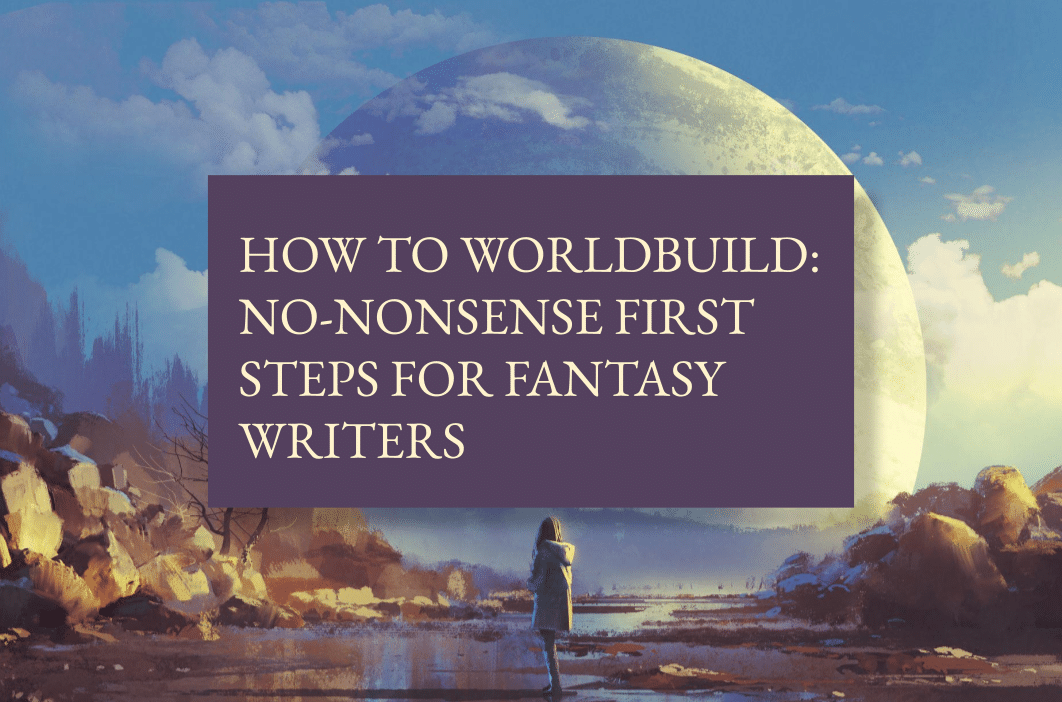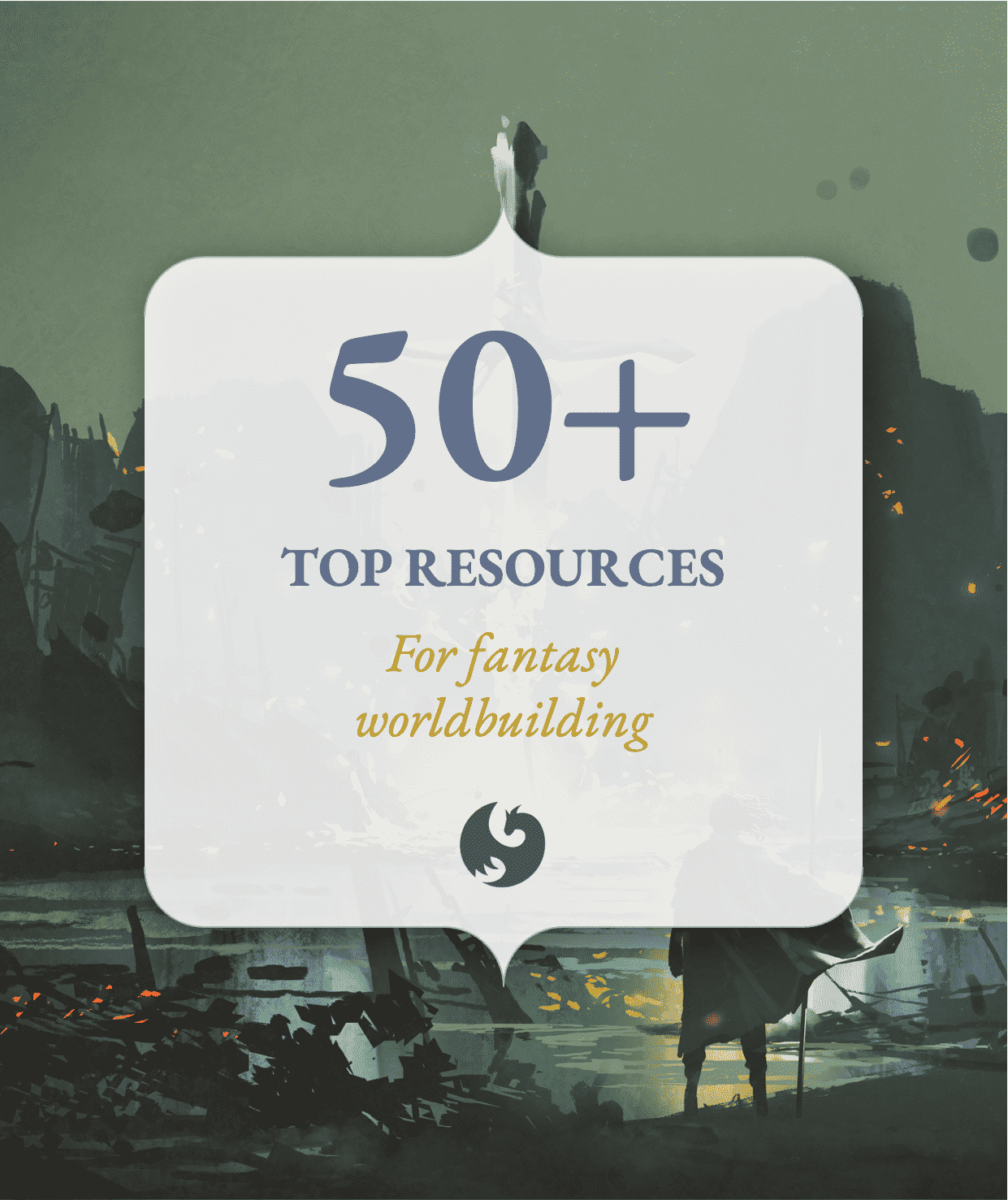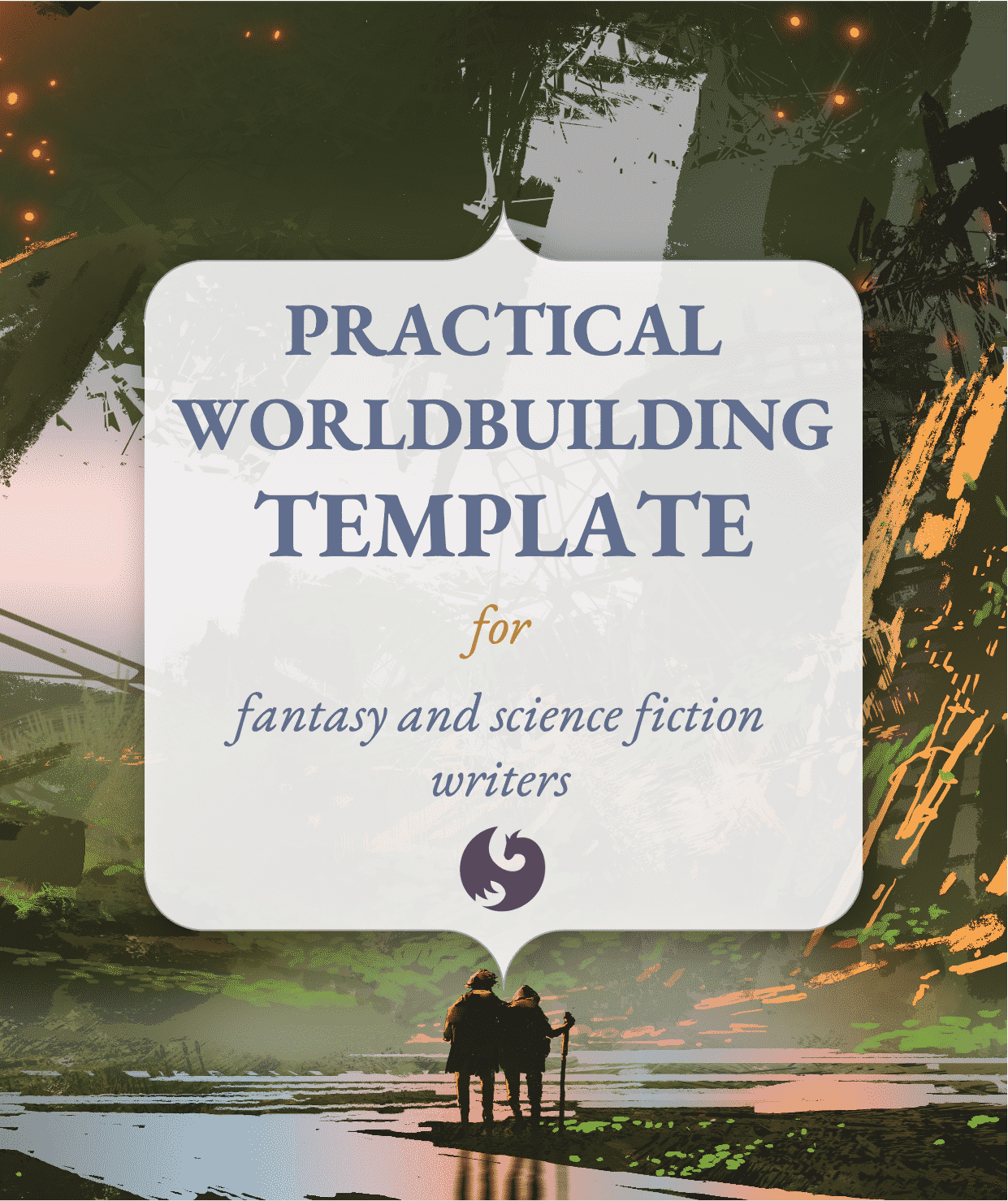How to Worldbuild: No-Nonsense First Steps for Fantasy Writers
by Fabled Planet

Run a quick search on ‘how to worldbuild.’ You’ll find thousands of articles, forums, books, and videos on how to flesh out every aspect of your story’s world (and maybe become the next Tolkien) before you’ve written a single word of an outline or draft.
This is not without reason. Fantasy worldbuilding is an art. Many people worldbuild as a hobby in itself. They invent languages, write histories, and sketch meticulous maps – all with no plans to use their world to tell a story.
As an aspiring fantasy novelist, though, it’s easy to feel overwhelmed. How do you create an entire world from scratch? What does the reader need to know? How do you avoid spending years writing ‘binders of lore’ and never getting around to writing the book? Where do you start?
Most resources tell you what you need to consider to create a living, breathing fantasy world. This guide will give you one possible approach to the how.
As with anything else in writing, there’s no one-size-fits-all approach to worldbuilding. And no single approach can get you to a full manuscript whose every description paints a vivid, three-dimensional picture.
But it can get you started.
And that’s what this guide aims to help you do.
This guide assumes that you have an idea for a story but haven’t begun thinking about your story’s world in detail. If your project is further along than that, feel free to jump to the step most relevant to your stage in the process.
Step 1: Find clues in inspiration
Start with what you know. The flashes of inspiration that provided the seeds of your story can give you some clues about its setting. Whatever form your inspiration comes in (images, voice, bits of narrative), these flashes probably have some quality or detail about them that evokes a geography, social order, level of technology, or activity. Is the man in your mental image wearing a suit of armour? Is that epic duel taking place on the nets of a wooden ship? Does that couple’s first kiss happen in the dazzling lights of a metropolis? Does the talking cat have an accent you can place?
Don’t jump to any conclusions about your story world and cut off possibilities right away. (Your man in a suit of armour isn’t necessarily in a medieval-inspired world – your imagination might surprise you!) Just write down those clues.
Step 2: Consider your plot
Avoid zooming out to the large scale of your world. Instead, focus on the individual experience of your main character(s) (A.K.A. the actual story). Identify the aspects of the story world that will be most pertinent to the plot. Does a major plot point take place in a temple? Then religion might be a crucial aspect to build. Is one of your viewpoint characters an army general? Then you won’t get far without knowing how war works in your world or the backstory behind this particular war. Do your characters cast spells? Then you need a magic system.
Suggested categories (with some keywords to spark inspiration) include:
- culture – customs, dress, calendar, crime, family hierarchies and relationships, marriage, funerary rites
- religion – god(s), places of worship, ways of worshipping, sects, afterlife, values, belief in supernatural beings, iconography
- economy – currency, trade alliances, shops, haggling, distribution of wealth
- food – animal meat, edible plants, delicacies, agricultural methods, shortages
- language – greetings, terms of address, taboo words, names, numbering system
- politics – factions, government system, type of leader(s), conflicts, sources of instability, war
- education – schools, subjects of study, how information is conveyed (oral or written), (non-)importance of education, levels, examinations
- geography – seasons, climate, natural disasters and hazards, wildlife
List five categories, and save that list for Step 4!
50+ top resources for fantasy worldbuilding

Step 3: Choose a model
Identify a model setting – a time and place from our world or another fantasy world that most resembles your story world. You don’t have to have concrete examples of parallels between your story world and the model. Trust your instincts. You might think, ‘I don’t know if it’s because my story is similar to that period drama I watched last month or because the main character’s dress is like the one at that museum exhibit I love… but somehow, this world seems a lot like Victorian London.’ Perfect. Write it down. ‘Victorian London.’
You can also do a combination of multiple settings (‘a cross between Wonderland and Byzantine Constantinople’), as long as you know what that mash-up would look like.
Why choose a model setting? Two reasons.
The first is that it helps with authenticity by creating the illusion of a coherent world. Take a note from historical fiction: story worlds tend to feel more believable when they have a sense of familiarity and consistency about them. No, your world isn’t ancient China. But its architecture, dress, and social customs might be enough like ancient China that the brains of readers (who perhaps once watched a documentary on ancient China) will recognize it, even subconsciously. And that triggers a thought that every fantasy author wants to inspire in a reader:
‘This world feels real.’
Secondly, a model setting will be a huge help when you do research or visualize details for your descriptions. Not sure what the castle’s kitchens would look like for that scene with the cook? Google your model setting plus ‘castle kitchens.’ Now you have examples to write from.
Some writers might worry that using a historical setting from our world is ‘cheating’ or makes their worldbuilding ‘unoriginal.’ If that’s you, I encourage you to think about your favourite fantasy worlds. Chances are, they bear more than a passing resemblance to one or more settings from our own world. Lewis’s Narnia, Tolkien’s Shire, Martin’s Westeros, and Abercrombie’s Union are essentially fantastical versions of the medieval British Isles. (And many other authors in turn have taken inspiration from these fantasy worlds.) More obviously, Phillip Pullman’s His Dark Materials takes place in a parallel-universe Oxford. Many of Neil Gaiman’s books are set in London. The list goes on. Even for the masters of the fantasy genre, worldbuilding doesn’t happen in a vacuum.
Remember, you can take as much or as little from your inspirational setting as you want. Simply having one and making it identifiable will help both you and your readers.
Step 4: List five things
Take your five categories from Step 2. For each, write a list of five facts about your world that are relevant to that category. For example, let’s say your main character is a diplomat, so you wrote ‘culture’ as one of your categories. Now, you’ll write five specific, concrete facts about the culture(s) of your world. This might be an interesting custom, a point of contention between two cultures, a common pastime in the society, a social class hierarchy…
If you came to this exercise already knowing a few things about your world, great – include them in your lists.
So you can just list five random things that might appear in your world in each category? That sounds easy! Not so fast. Brainstorming and researching five desserts that might appear on your characters’ feast-day table might sound like fun, but that’s not what we’re after. (Unless, of course, your main character happens to be a pastry chef!) To get the most juice out of this exercise, we want to brainstorm facts that have meaning in the story.
How?
For each item on your lists, think of how it might appear in the story. How can you make it relevant? How might you tie it back into other aspects of your storytelling, especially characterisation and plot?
For example, let’s say your main character is a bit of a nonconformist. You learn from your research or imagination that everyone of her class or profession carries a sword. But what if she, odd duck that she is, doesn’t do what everyone else does? Maybe she carries a billiards cue instead. From just this bit of information, you have a bunch of questions to answer: Why does everyone carry swords? How does this character fight with a billiards cue (if indeed she does fight)? Why doesn’t she use a sword like everyone else? What’s the history there?
Or, let’s say you’re bursting with ideas for the clothes your characters would wear. Instead of relegating all those powerful images to a few fashion info dumps, why not channel them into a high-stakes plot point? Maybe your character is homeless and won’t be allowed into the palace for an important audience with the king unless he finds some presentable clothes to wear. You could easily have a whole scene around this character figuring out what garments he needs to be accepted, then scheming his way into them. What does all this say about life in the palace? About the king who rules there? About how commoners are treated? About how badly the character needs this chance?
This is the way to proceed. You want each list item to branch out into questions and histories that imbue it with meaning and tie it back into other aspects of the story. You take the bits of inspiration that come to you and flesh them out in relation to your characters and plot until they take on a life of their own.
Remember, this is not the time to come up with every detail that will show up in your final draft. You won’t know what finer details you need until you’ve gone through the whole story in at least one draft or a thorough outline. Rather, this exercise ensures that a few key details not only make it into your story but also become essential to it.
Step 5: Play with interconnections
Once you’ve taken each item on your ‘five things’ lists as far as you can, look for more connections among them. Could that rule you wrote for your magic system have its origins in the creation story you sketched for the religion category?
Just like in our world, everything in your story world is interconnected. Our curses are inspired by religion. Our diet is dictated by geography and technology. Our wars reflect our politics and economies.
Step 6: Assign places
A challenging aspect of worldbuilding is conveying the history, people, places, and customs of your world to readers in a way that sticks. While there are countless techniques to achieve this, perhaps the most important is timing. You want to deliver each bit of exposition as and when the reader needs it to understand the story.
The Future You who will be drafting this story will already have a lot on their plate. Do them a favour. Decide now where in the story you can introduce each key piece of worldbuilding from the previous steps.
Depending on how much you’ve outlined, where might be anything from ‘somewhere in Act One’ to ‘during the meeting with the priest in Scene 14.’ That way, when it’s time to draft, Future You will know to weave that information into the narrative. (Which is also perfect for those moments when you’re blanking on what to write next!)
Try it!
There you have it. These six steps will give you a solid foundation for a world that’s not only convincing but also woven into the story.
Ready to give it a try? Check out Fabled Planet’s Worldbuilding Template. It will take you through all the steps on this list, along with giving you a structure and some helpful hints.
Practical worldbuilding template

Do you write fantasy or science fiction?
Join our email list for regular writing tips, resources, and promotions.
